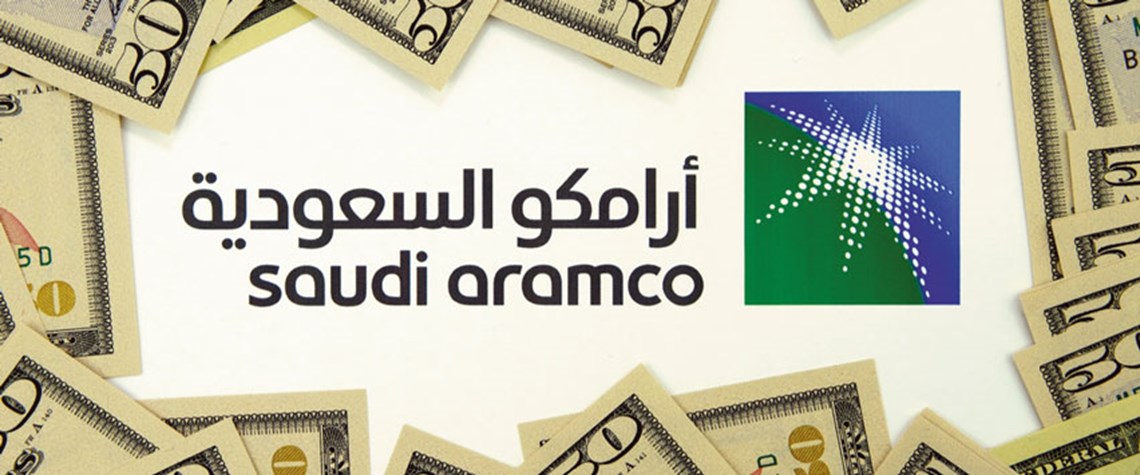Saudi Aramco, the world’s top crude exporter, is flaunting its renewed investment muscle—enabled by the profit windfall from high prices that have roiled the budgets of consuming countries. At the turn of the year, billions of dollars-worth of contracts were doled out for the expansion of the giant Zuluf offshore oilfield, barely a month after an even costlier crop of awards for exploitation of the Kingdom’s largest unconventional gas field.
Mindful of its dual role as the prime source of Riyadh’s budgetary income and an engine of domestic economic development, the parastatal heavyweight is also stepping up efforts to maximise the proportion of such lavish spending dispensed locally.
The Zuluf expansion is the largest in incremental capacity terms of three major offshore oil development projects launched in 2017—designed to add a combined 1.2mn bl/d of capacity. Contracts were apportioned on the other two, at Marjan and Berri, before the spending freeze occasioned by 2020’s oil price collapse. Tendering on the outstanding project resumed last year on the back of the oil price recovery, coupled with rising production as Opec cuts eased.
As a result, Aramco’s nine-month profits soared by 122pc year-on-year, to $23.3bn. The company also raised $15.5bn last month from the part-sale of its gas pipeline network. Capex has, though, remained muted, with January-September outlays of $23.3bn up only 16.2pc annually. But what spend there has been has focused heavily on the core upstream business.
The five main offshore contracts on Zuluf—planned to add 600,000bl/d of Arabian heavy capacity—went to international bidders, the US’ McDermott, India’s Larsen & Toubro (L&T), the UK’s Subsea 7 and the UAE’s NPCC, for a total of more than $4bn. Award of the two main onshore packages remains pending, following bid submission in October.
Aramco has previously indicated that the extra production permitted by the three projects will not affect stated maximum sustainable capacity—which the government directed in early 2020 should be raised by 1mn bl/d, to 13mn bl/d, by an unspecified date. It will instead be used to offset declines elsewhere and increase output flexibility.
The Zuluf awards follow the first on the landmark development of the Jafurah unconventional gas field—a c.200tn ft³ (5.7tn m³) resource long considered too costly to exploit in the Eastern Province—approved by Riyadh in February 2020 and budgeted at an eyewatering $110bn. Production of 2.2bn ft³/d is envisaged by 2034, with the initial phase, scheduled for completion in 2025, calling for production of 200mn ft³/d.
Upstream commitments
Aramco put the total value of the 16 contracts handed out in late November at around $10bn. The firm has talked recently about the potential for the output to be deployed to produce blue hydrogen, rather than in gas-fired power generation or petrochemicals manufacturing. But the slew of upstream awards makes it difficult not to conclude that Riyadh’s intent remains to continue expanding oil and gas production even as decarbonisation pressure mounts elsewhere.
Saudi authorities have recently seized on rising prices to cast unfashionable oil and gas investment in a benign light, emphasising its potential to stabilise markets and protect consumers. But the country-specific justification remains Saudi Arabia’s overwhelming economic dependence on the hydrocarbons industry and Aramco as its corporate embodiment, which goes far beyond simple revenue-generation.
Aramco has had an “in-Kingdom total value-add” programme in place since 2015, calling for 70pc of its huge equipment and services needs to be met locally by 2021. It is slated to contribute some 60pc of the $1.3tn Crown Prince Mohammed bin Salman announced in March 2021 would be reinvested by Saudi-listed companies in the domestic economy by 2030.
An intensification of longstanding efforts to persuade the company’s leading international upstream contractors to localise their supply chains was evident in several agreements late last year with its offshore stalwarts. In September, Italy’s Saipem signed a memorandum of understanding (MoU) to consider partnering local entities in creating an engineering, procurement and construction ‘national champion’—the Kingdom lacks an equivalent of NPCC.
McDermott also signed an MoU covering the use of its existing fabrication yard at Ras al-Khair in modular construction for Aramco. And, in December, L&T agreed to collaborate on establishing a specialised component manufacturing facility at Jubail, serving not only Aramco’s needs but also those of the oil, gas and power sectors throughout the region.








Comments